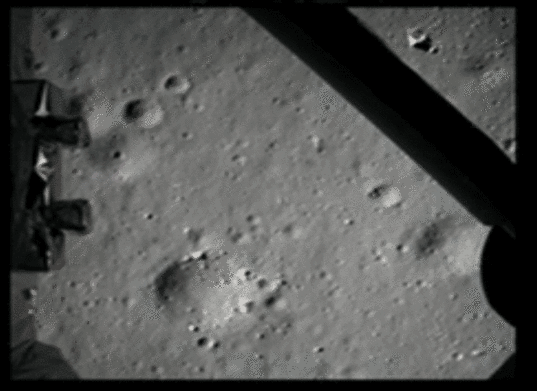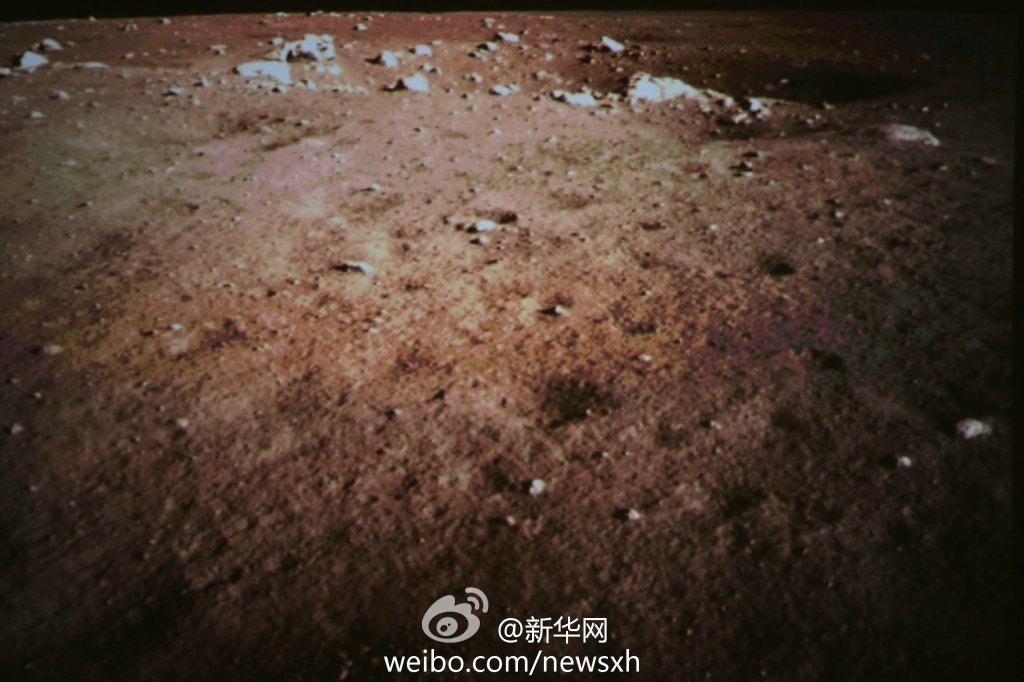It looks like you're using an Ad Blocker.
Please white-list or disable AboveTopSecret.com in your ad-blocking tool.
Thank you.
Some features of ATS will be disabled while you continue to use an ad-blocker.
share:
alfa1
scotsdavy1
will see if they pick up the stars from the moon as well....
Why would you expect the cameras to pick up stars if the exposure is set for viewing the surface?
Is it because being "in space" somehow magically changes the laws of optics?
What...you think exposure can't be adjusted on the fly?
reply to post by MysterX
Sometimes on a clear day, it's possible to see some stars so why not on the moon as well? Even on the ISS with the brightness of the Earth and Sun, it's possible to see stars as well.
I think only time will tell as not everything we are being told by NASA is the truth as we all know...
Sometimes on a clear day, it's possible to see some stars so why not on the moon as well? Even on the ISS with the brightness of the Earth and Sun, it's possible to see stars as well.
I think only time will tell as not everything we are being told by NASA is the truth as we all know...
reply to post by scotsdavy1
I know China is in to censorship and all, but will they censor Moon pix too?
I hope not.
I know China is in to censorship and all, but will they censor Moon pix too?
I hope not.
The Planetary Society blog update: www.planetary.org...

A color image shot from a "monitoring camera" on Chang'e 3 after the landing:


A color image shot from a "monitoring camera" on Chang'e 3 after the landing:

"All these worlds are yours, except Europa."
"Use them together."
"Use them in Peace"
"Use them together."
"Use them in Peace"
reply to post by wildespace
Thanks. Been a long time since humans have seen those kind of new pictures.
Thanks. Been a long time since humans have seen those kind of new pictures.
MysterX
alfa1
scotsdavy1
will see if they pick up the stars from the moon as well....
Why would you expect the cameras to pick up stars if the exposure is set for viewing the surface?
Is it because being "in space" somehow magically changes the laws of optics?
What...you think exposure can't be adjusted on the fly?
Actually yes. It's called using the right tool for the right job.
You can always help to crowdfund a lunar telescope.
edit on 14-12-2013 by JadeStar because: (no reason given)
wildespace
The Planetary Society blog update: www.planetary.org...
A color image shot from a "monitoring camera" on Chang'e 3 after the landing:
Thought NASA said there was no colour on the moon?
scotsdavy1
wildespace
The Planetary Society blog update: www.planetary.org...
A color image shot from a "monitoring camera" on Chang'e 3 after the landing:
Thought NASA said there was no colour on the moon?
Do you know what a filter is?
scotsdavy1
Wonder if their rover goes to one of the sites America landed on the moon, would be interesting if they did....
China will find the US Flag on the moon and replace it with its Chinese Flag...just wait and see....now the war for conquering the moon will begin.
reply to post by Aleister
I wish they landed near Zeeman Crater.
Lots of interesting things to see there. Just ask Clementine...
I wish they landed near Zeeman Crater.
Lots of interesting things to see there. Just ask Clementine...
scotsdavy1
Thought NASA said there was no colour on the moon?
They did? Where? www.nasa.gov...
But that particular image colouration is probably due to bad imaging or transmission. Lunar mare are mostly dark grey with a slight reddish or bluish hue, depending on mineral composition.
alfa1
ChaoticOrder
Seeing if they pick up the stars was one of the first things that popped into my head as well. Considering no one has apparently landed a craft like this on the moon since the 70's, and since those original missions are surrounded in conspiracy theories, many of which revolve around the apparent lack of stars in the background sky, then it would be very interesting to see images from a 3rd party like China to see if they corroborate what has been captured in those early missions.
Actually you can try this experiment for yourself.
Go outside on a cloudless night and use some kind of very bright light to illuminate some grey rocks.
Strong flashlight, camera flash, bright spotlight, holding the rock close in front of car headlights...etc... to illuminate the rocks with the same intensity as the sun would during the day.
Then, after taking correctly exposed images of those rocks, can you also see stars in the background sky?
I think not.
To the "I wonder if they pick up stars"-crew, please listen to alfa1. You will never pick up a star with that exposer time, no matter where you are in the universe.
Grab your camera and try it out yourself before denying the US was on the moon because of missing stars.
JadeStar
scotsdavy1
wildespace
The Planetary Society blog update: www.planetary.org...
A color image shot from a "monitoring camera" on Chang'e 3 after the landing:
Thought NASA said there was no colour on the moon?
Do you know what a filter is?
Do you absolutely HAVE to turn on the sarcasm all of the time? Do us a favour and give it a rest eh?
On the subject of filters, i doubt this cam had filters as it's just a monitoring / surveillance camera, a fairly low res cam for seeing what's going on with the craft. It's not mission specific or for anything other than checking the the immediate area of the lander iow.
The moon is not grey..there are many colours there, some are quite vivid too, from Earth it does look grey however, because of the distances involved. But even with a filter for darkening the image, it's quite obvious from that one still there are multiple colours present in that picture...browns of various hues, purples, violets and even greens, unless there were multiple filters over the lens that took that image, a single filter as an explanation for the colour in that picture doesn't work, as there's more than one colour.
Different minerals will present different colours.
There's no mystery about the colours on the moon, except perhaps the public being told on a number of occasions that the moon is grey...which isn't strictly accurate, as we can see.
edit on 14-12-2013 by MysterX because: added more info
reply to post by wildespace
This is the most exiting venture we have had for many years.
I always wonder why Nasa have never returned with a Lunar rover to retrace the alleged Moon landings. Surely science has
vastly advanced, yet the reluctance of Nasa to return, even by an unmanned craft, makes no scientific logic whatsoever.
This is the most exiting venture we have had for many years.
I always wonder why Nasa have never returned with a Lunar rover to retrace the alleged Moon landings. Surely science has
vastly advanced, yet the reluctance of Nasa to return, even by an unmanned craft, makes no scientific logic whatsoever.
new topics
-
Azerbaijan E190 Passenger Jet Shot Down by Russia
Mainstream News: 1 hours ago -
Orange County Makes Shoplifting a Felony
Other Current Events: 5 hours ago -
It's Offical Now
US Political Madness: 7 hours ago -
The reason it works is.....
General Chit Chat: 8 hours ago -
Dick Van Dyke saved from Wildfire by neighbours on his 99th birthday
People: 10 hours ago
top topics
-
Orange County Makes Shoplifting a Felony
Other Current Events: 5 hours ago, 13 flags -
It's Offical Now
US Political Madness: 7 hours ago, 11 flags -
The reason it works is.....
General Chit Chat: 8 hours ago, 7 flags -
Dick Van Dyke saved from Wildfire by neighbours on his 99th birthday
People: 10 hours ago, 5 flags -
Azerbaijan E190 Passenger Jet Shot Down by Russia
Mainstream News: 1 hours ago, 4 flags
active topics
-
Mood Music Part VI
Music • 3764 • : Hellmutt -
Azerbaijan E190 Passenger Jet Shot Down by Russia
Mainstream News • 5 • : Naftalin -
Orange County Makes Shoplifting a Felony
Other Current Events • 19 • : Coelacanth55 -
It's Offical Now
US Political Madness • 10 • : rickymouse -
The Acronym Game .. Pt.4
General Chit Chat • 1027 • : FullHeathen -
NYPD arrests migrant who allegedly set woman on fire on subway train, watched her burn to death
Breaking Alternative News • 54 • : Irishhaf -
Christmas Dinner ??
Food and Cooking • 18 • : network dude -
-@TH3WH17ERABB17- -Q- ---TIME TO SHOW THE WORLD--- -Part- --44--
Dissecting Disinformation • 3810 • : 777Vader -
Post A Funny (T&C Friendly) Pic Part IV: The LOL awakens!
General Chit Chat • 7953 • : underpass61 -
Dick Van Dyke saved from Wildfire by neighbours on his 99th birthday
People • 1 • : soulrevival

